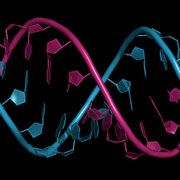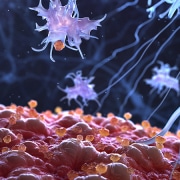Let’s talk about (biological) sex
Sex as a biological variable has not always been factored in to medical research and practice. Will that change in the era of precision medicine?
Clinicians have long observed that some medical conditions are more prevalent in males than females, or that conditions may be equally prevalent but present differently in terms of symptoms or severity.
In addition to well-understood genetic differences, such as the X-linked conditions that disproportionately affect males (for example, Duchenne Muscular Dystrophy), there are numerous diseases that we know have complex causation – including genetic and environmental factors – that also show different patterns between the sexes.
For example, pre-menopausal women have a lower rate of cardiovascular disease than men of the same age, but after menopause their risk is greater than their male peers.
Schizophrenia, Tourette’s syndrome and autism spectrum disorder all display differences in severity and symptoms between male and female patients.
While some of these differences may be directly due to physiology or hormones, there is emerging evidence that genomics plays a part. The authors of a review published last month in Nature have gathered together a huge volume of studies in the area and have tried to tease out “the role of sex in human complex traits”.
Possible modes of difference
Sex differences in expression are found in genes from across the genome, not just the X and Y chromosomes, although the X chromosome (which is often excluded from genome-wide association studies) has a particular concentration of genes that are differently expressed between the sexes.
One study, which examined gene expression in more than 5,000 blood samples, found that 3% of all expressed genes showed different levels of expression between males and females. Female-biased genes were linked to the immune system (autoimmune diseases are more common in women) and rheumatoid arthritis, whereas male-biased genes included some linked to renal cancer.
Another factor is hormones: in around one-third of genes that are differentially expressed in males and females, hormones may be directly involved in regulating transcription. Menopause, which causes significant changes in women’s hormone levels, has been proved to affect expression levels of several genes.
The authors also note that epigenetic modifications to the genome have been shown to vary between males and females. Sex differentiated patterns of two of the main forms of epigenetic modification – methylation and chromatin accessibility – have been observed.
The authors stress that these differences may individually have very small effects, but cumulatively they could account for some of the variation observed in disease prevalence between men and women.
What can and should be done?
The authors argue that “biological factors that differentially impact women’s health have been understudied, contributing to growing disparities in healthcare for women across the globe”.
Women were historically excluded from clinical trials, and although that is no longer the case, failure to understand pharmacokinetic differences between the sexes has led to unsafe dosing advice, such as in the case of zolpidem (Ambien), where the US Food and Drug Administration had to issue revised guidelines for female users.
Stratifying studies by sex as well as other factors could, however, lead to improvements in precision medicine beneficial to both men and women.
The authors conclude: “Without understanding the effects of sex on disease risk, prognosis and treatment efficacy, efforts towards precision medicine are likely to suffer in multiple domains.”
–









